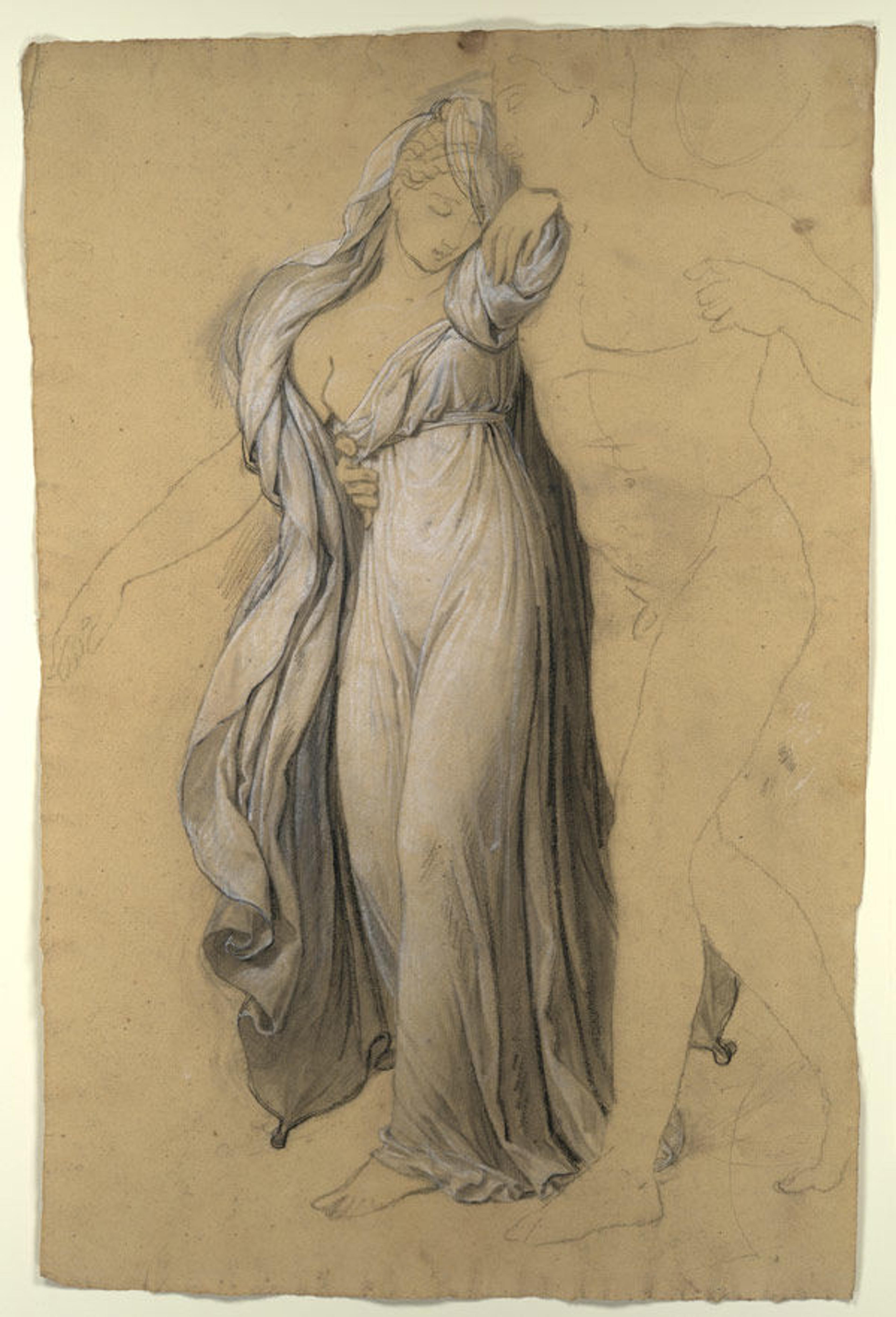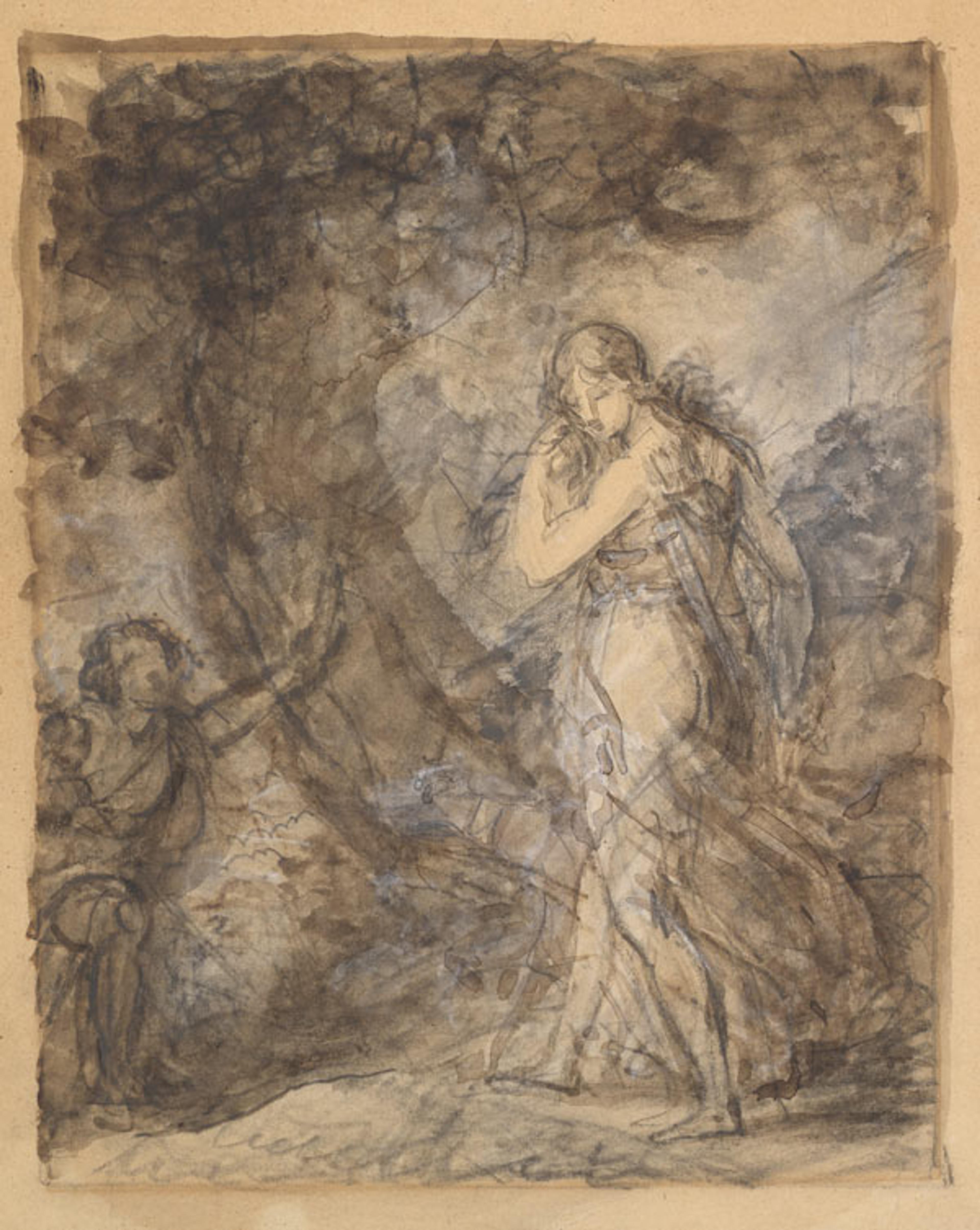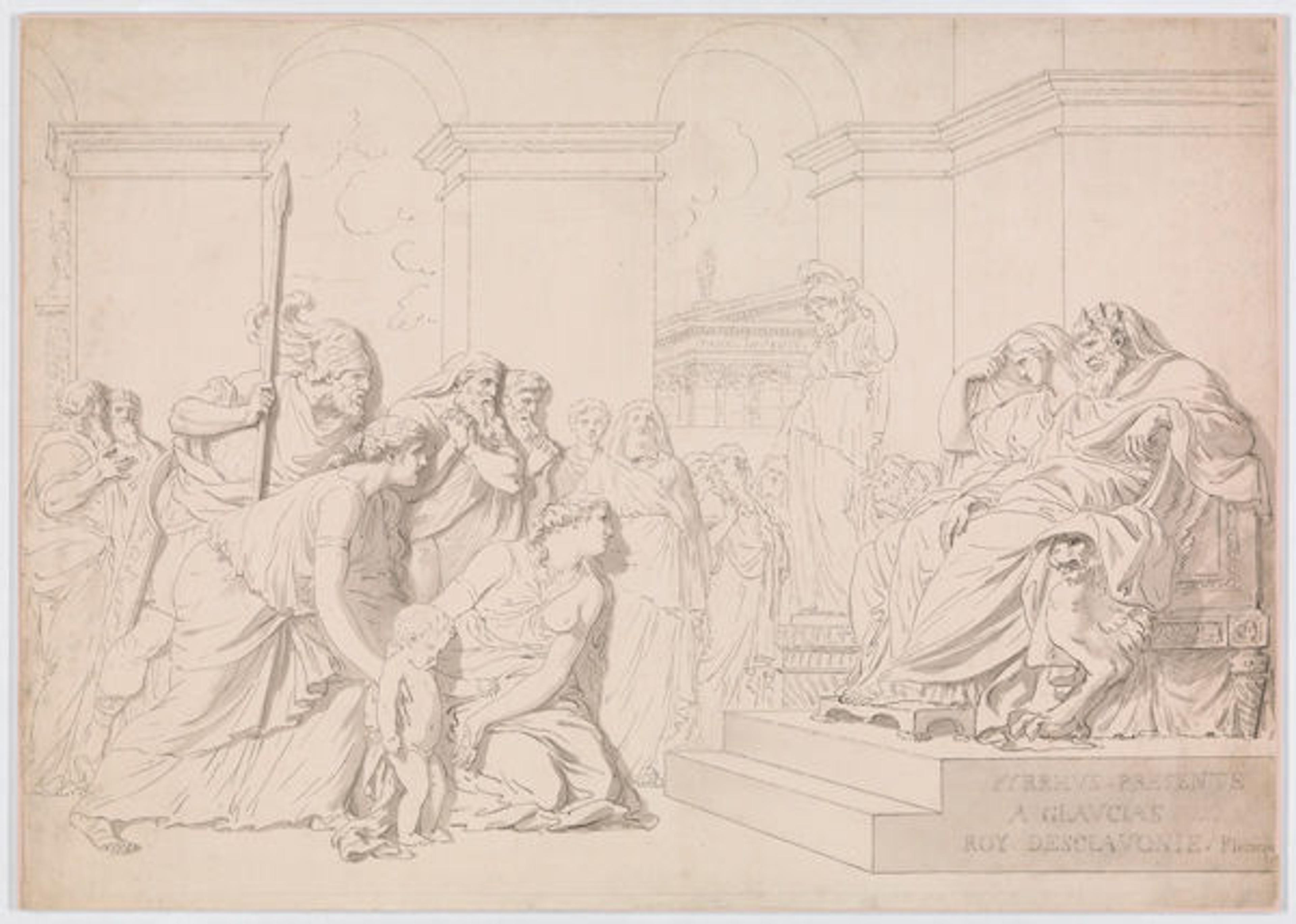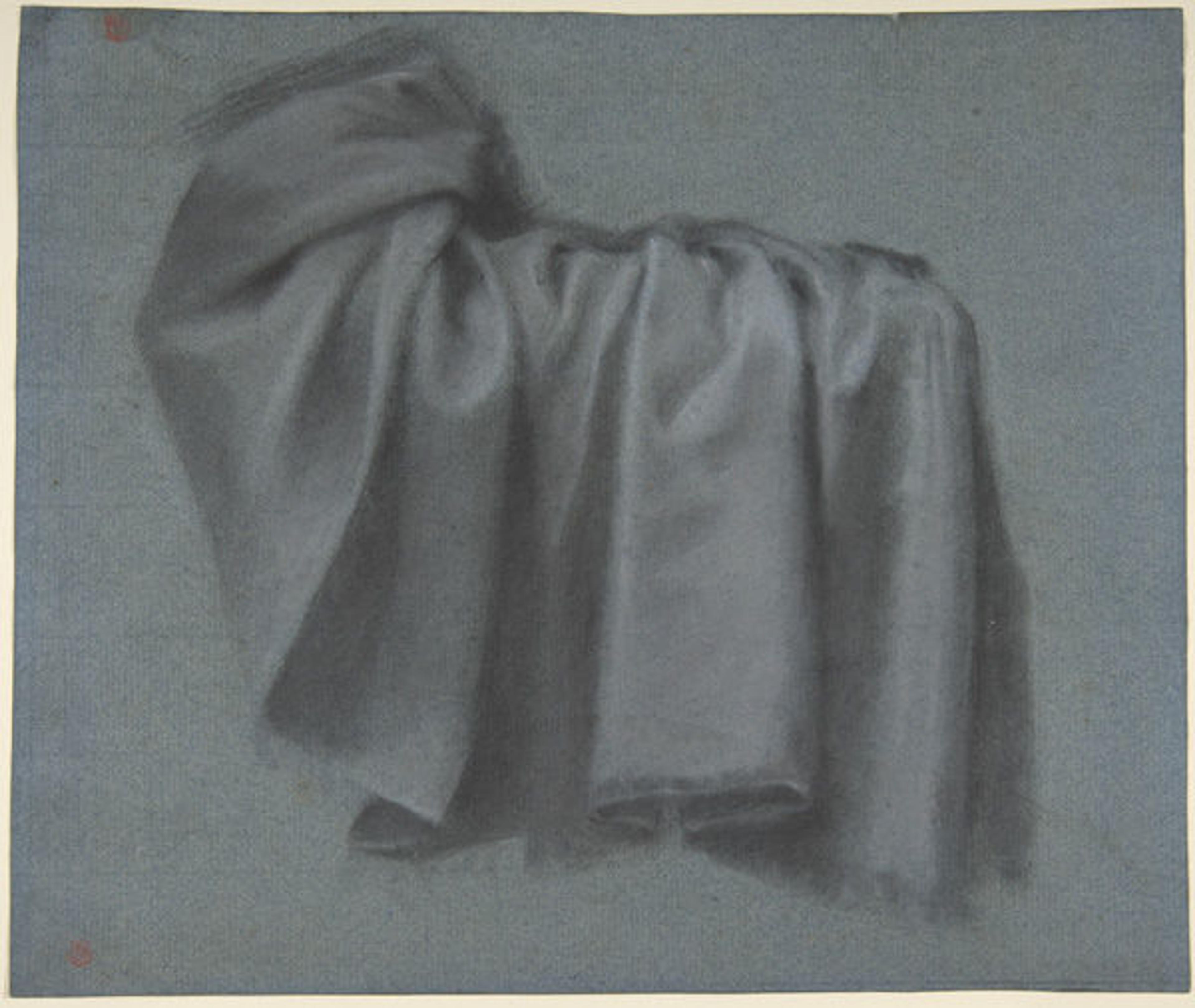The Body Hidden, the Body Revealed: Neoclassical Drapery Studies

Joseph Ferdinand Lancrenon (French, 1794–1874). Drapery Study for Castor and Pollux Freeing Helen, 1817. Black chalk, stumping, white chalk, black crayon on buff laid paper; Sheet: 17 15/16 x 12 in. (45.6 x 30.5 cm). The Metropolitan Museum of Art, New York, Purchase, Renée Sacks Bequest, 2005 (2005.167.4)
«In the late eighteenth century, when the advent of Neoclassicism had many painters turning to subjects inspired by ancient Rome, the ability to render drapery on the human figure became an essential skill, as seen in a group of drapery studies on view in the Robert Wood Johnson, Jr. Gallery through September 28. Just as it had in antiquity, both the challenge and the appeal of the subject lay in the way the drapery both covered and revealed the human form.»
In Joseph Ferdinand Lancrenon's study of Helen, the figures and faces are indicated only in rudimentary outline, with the artist's effort reserved for the delicate modeling of Helen's drapery as it clings to her body and flutters in the breeze.

Baron François Gérard (French, 1770–1837). Daphnis Running toward Chloe, ca. 1798. Black chalk, brush with brown and gray wash, heightened with white gouache, on light tan wove paper; Sheet: 10 13/16 x 8 15/16 in. (27.5 x 22.7 cm). The Metropolitan Museum of Art, New York, Purchase, Guy Wildenstein Gift, 2012 (2012.234)
In a preliminary study of a mythological scene, Baron Gérard uses filmy layers of wash to suggest flowing translucent fabric, investing the scene with a sense of movement and animation.

Angelica Kauffmann (Swiss, 1741–1807). Study of a Standing Woman, 1792–96(?). Black chalk, heightened with white chalk, on gray-blue prepared paper; Sheet: 15 5/16 x 9 3/4 in. (38.9 x 24.7 cm). The Metropolitan Museum of Art, New York, Purchase, Brooke Russell Astor Bequest, 2013 (2013.64)
More sober and opaque is the study of a young mother in a biblical scene of Christ blessing the children painted by Swiss artist Angelica Kauffmann around 1796. The weighty layers of fabric carefully modeled by the artist lend a strength and monumentality to the woman who, in the painting, carries an infant in her left hand and holds the hand of an older child in her right.

Augustin Pajou (French, 1730–1809). Pyrrhus in the House of Glaucias, late 18th century. Black chalk, pen and gray ink, gray wash on two joined sheets; Sheet: 22 5/16 x 31 5/16 in. (56.7 x 79.5 cm). The Metropolitan Museum of Art, New York, Harry G. Sperling Fund, 2014 (2014.439)
The treatment of drapery was often affected by the function of the drawing. This large sheet by sculptor Augustin Pajou was a design for a bas-relief. The narrow cast shadows along the right contours of the figures allow us to envision how he intended to carve the scene in shallow relief.

Pierre Paul Prud'hon (French, 1758–1823). Study of Drapery, ca. 1813. Black and white chalk with stumping on blue paper; 10 1/16 x 10 1/4 in. (25.5 x 26 cm). The Metropolitan Museum of Art, New York, Purchase, Guy Wildenstein Gift, 2008 (2008.44)
Pierre Paul Prud'hon was a master of rendering fabric in a tactile manner, here in this study creating a velvety effect by blending black and white chalk on blue paper. This study depicts a detail of Andromache's gown in Prud'hon's Andromache and Astyanax, which is also in the Met's collection and is on view in gallery 614.
On view for one more week, this group of five Neoclassical drapery studies offers a glimpse into the multitude of ways artists have chosen to approach one of the most universal of subjects: the body as it is both hidden and revealed by clothing.
Related Links
Drawings and Prints: Selections from the Permanent Collection, on view June 23–September 28, 2015
Read other blog posts related to this exhibition on Now at the Met.
Perrin Stein
Perrin Stein is a curator in the Department of Drawings and Prints.